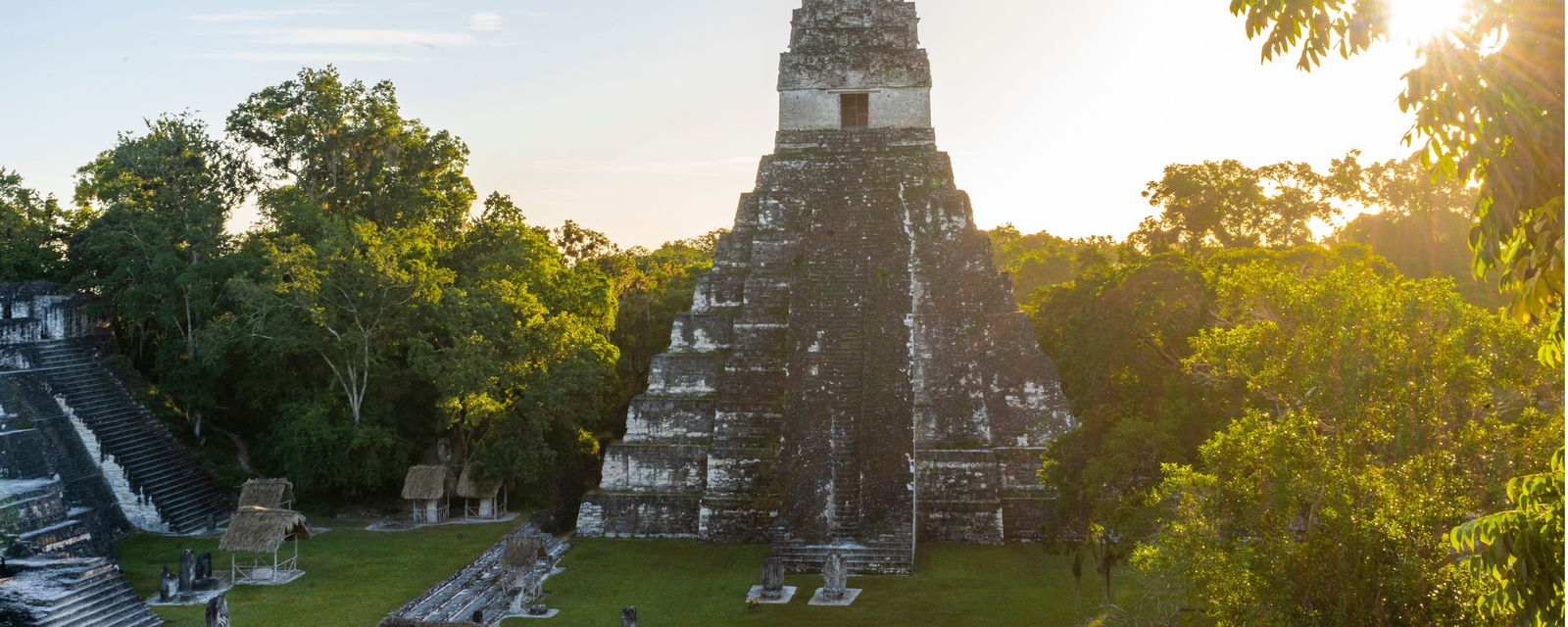


Jungle is what marks much of this Guatemalan department. And that is why it has become such a popular spot for tourists to explore and simply marvel at remnants of the Mayan past that they stumble upon here. Perhaps one of the reasons the area is most visited: The Maya Biosphere Reserve which spans over 21,000 square kilometers and was created in the 90s to protect the tropical forest region north of the Amazon. Those who travel through the reserve may encounter crocodiles and monkeys in addition to ancient Mayan ruins.
The ruin of an ancient city, Tikal is known for having dominated the Maya region at one time. Its vastly tall temples, walkways connecting the various complexes and even the monkeys and other animal species that call the ruins home will have you enthralled for hours.
The blue of the water is unmatched anywhere else in the world. Some believe it is a result of snails that give off that coloration. Whatever it is, snorkeling is a must here, and then relax with a picnic as you marvel at the view.
A pre-Columbian Mayan settlement, El Mirador is located in the heart of the jungle and boasts one of the largest pyramids known to have been erected in the Mayan world. While it is a bit difficult to get here, there are guided tours that leave by mule train or by foot.

Petén's winter, from December to February, offers pleasant weather with temperatures ranging from the mid-60s to low 80s Fahrenheit. It's an ideal time to visit this northern region of Guatemala as it allows for comfortable exploration of its rich Mayan history and natural wonders. Winter is perfect for visiting the ancient Mayan city of Tikal, one of the most impressive archaeological sites in the world. Visitors can explore the towering pyramids and temples that rise above the dense jungle canopy.

Spring in Petén, from March to May, brings slightly warmer temperatures with highs in the 70s to low 90s Fahrenheit. The landscapes remain lush and vibrant from the previous rainy season. Spring is ideal for exploring other Mayan ruins in the region, such as Yaxhá and Uaxactún, which offer a more tranquil experience compared to Tikal. Visitors can also go on wildlife tours to spot various bird species and howler monkeys in the region's national parks and reserves.

Petén's summer, from June to August, marks the beginning of the rainy season. While it can be hot and humid with temperatures in the 70s to mid-90s Fahrenheit, it also provides a refreshing respite from the dry season. Summer offers opportunities for exploring the El Mirador Archaeological Site, a remote and less-visited Mayan city hidden deep in the jungle. Visitors can embark on multi-day treks to reach El Mirador and witness its massive structures and plazas.

Fall in Petén, from September to November, is the peak of the rainy season. The weather remains warm and humid, with temperatures ranging from the mid-60s to low 80s Fahrenheit. Despite the rains, fall is an excellent time to experience the region's natural beauty in its full glory. Visitors can take guided tours to the Biotopo Cerro Cahuí, a protected area known for its diverse flora and fauna. Fall is also a time for celebrating local culture and traditions during various festivals and events held in the region.